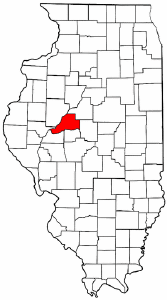Early History of Mason County- Crane Creek pt 1
Last week was history of Sherman Township
Next Week is Pennsylvania Township
This Week: Crane Creek
PART ONE
CRANE CREEK TOWNSHIP
Casting our mental vision backward along the stream of time half a century, we behold the region of country now embraced in Mason County one unbroken wilderness. Here and there, near some point of timber, or hard by
the bank of some creek or bubbling brooklet, might be found the log cabin of
the sturdy pioneer, with a few acres rudely cultivated. These were the only
indications of an approaching civilization. Emigrants, regarding these plains
and sand ridges as fit only to unite other and better portions of the country,
avoided them as unworthy of their notice. Now and then one from a passing
train dropped out, more from necessity than choice, and started an improvement In this manner the earliest settlements in the county were made. The
settler very soon discovered, however, that the forbidding appearance of the
surface was a false indication, that an exuberance of productive power lay here
concealed under an exterior show of poverty. This fact being discovered led to a steady, uniform and onward progress in the settlement ‘and development of
the territory. Despised and neglected as she was in the beginning, Mason
County to-day may safely challenge the State to produce better crops with an
equal amount of cultivation. Crane Creek Township, one of the civil divisions
of the county, is situated south of the center, and, in extent, contains a little more than one Congressional township. Originally, it embraced the eastern
half of what is now Kilbourne Township. It is bounded, north and east, by
Sherman and Salt Creek Townships respectively ; south by the Sangamon
River, and west by Kilbourne Township. The surface is about, equally divided
between prairie and woodland. The extreme southern portion of this section
is subject to overflow, and is valuable for pasturage only. The southwestern
part of the timber district has a fine growth of young and valuable timber,
which has sprung up within the memory of some of the earlier settlers yet
living. A county ditch crosses the northwest corner and, with its tributaries,
drains a large extent of its productive land. Much of the timber-land is high
and broken, and the soil of an unproductive nature. Yardley, Revis and Long
Lakes are small bodies of water found in the south part of the township, tributary to the Sangamon River. Taken throughout its entire extent, it is not the
best, nor yet the least productive of the various divisions of the county. In
point of settlement, it reaches back through a period of fifty years, and to this
feature of its history we will now direct our attention.
EARLY SETTLEMENT.
The earliest settlement made in the township was in that portion of the
woodland section first known as Price’s, afterward Walker’s Grove. To Henry
Sears, who, although he has passed his threescore years and ten, is still in a
fine state of physical and mental preservation, we are largely indebted for much
that is interesting in the early history and settlement of this section. In 1829,
the year in which 0. M. Ross is said to have settled permanently in Havana,
George Garman and brother, from North Carolina or Kentucky, made a squatter’s claim on the east side of the grove. They built a cabin and broke forty
acres of the adjoining prairie. Like many other first settlers, they did not
remain long before selling out their claim and returning to their native land.
The year 1830 brought in a man by the name of Rose, also James Price, Enoch
Estep and Spencer Clary. These all settled in the grove, excepting Estep, who
located farther south. Of Rose no record has been given, either as to his for- mer place of residence or whither he went. He led a kind of nomadic life, and
was probably more or less intimately connected with Price, with whom he
came. James Price is well remembered from his intimate relation to the noble
red men of the forest. His wife was an Indian squaw, a woman of fine muscular development and great physical endurance. On leaving Walker’s Grove,
Price next made a claim farther east, at what is known as Lease’s Grove, in Salt
Creek Township, and, after a few years, went west of the Mississippi to the reser- vation allotted to his red kinsmen by the General Government. Here he soon
afterward lost his life while engaged in boating. Clary remained a citizen until
the date of his decease, and his remains lie buried on land now owned by Uncle
Henry Sears. He was a soldier in the war of 1812, and is referred to by those that
knew him as a clever, hard-working man, but one who did not have the faculty
of acquiring property’. He began life with nothing and held his own remarkably well to the date of his demise. His family and immediate descendants
have long been absent from the citizenship of the township. Estep was from
North Carolina, and built his cabin at Revis’ Springs, in the south part of
this section. After a residence of some years, he moved to Jasper County,
where he died. James A. Revis, from Warren County, Ky., came in 1831.
From him Revis Lake and Springs derived their names. His father, Charles
Revis, had been in the Territory .in an early day, and is said to have erected
the first hotel in Vandalia in 1816. James A. died in 1838, and, with his
companion and some of his children, was buried on a knoll overlooking the
Sangamen. The plowshare of the more recent settler has long since made
deep furrows over their last resting-place, and but few remain to-day who
can point with any degree of certainty to the spot of their interment. Long
since, their moldering bodies have passed away, and the earth above them
has settled in to supply their places. This suggests to us the sad but certain
fate that awaits all private places of interment. The little mounds recently
formed in the old family burying-ground, where the violets and primroses,
planted by surviving love, have blossomed but a few short years, will, when
the old homestead shall have passed into the hands of those who knew not
the loved sleepers, be trodden beneath unhallowed feet, and children’s children
shall look in vain for the graves of their grandsires.
In 1832, a number of additions were made to the settlement in this section.
John Yardley and his sons James and John, originally from North Carolina,
but here direct from Kentucky, came and stopped a short time in Menard
County. Soon afterward, they located on Crane Creek. The old gentleman,
his son John and his son-in-law, Sol. Norris, after a few years’ residence, sold
out and moved to Texas. All are now numbered with the dead. James,
and a number of his descendants, are still citizens of the township, all of whom
have led upright and honorable lives. The same year, Josiah Cook, from Green
County, Ky., put in an appearance. He made a small beginning in the way
of an improvement, but did not move to it. He died, a number of years ago,
in Menard County. He is represented as one of those shiftless fellows
often met with, whose greatest gift was that of talking, and who moved from
place to place as circumstances might permit or occasion demand. By his death,
many promises to pay were canceled. About the same date, James Sutton,
from Maryland or Virginia, came to Walker’s Grove. He bought out the
claim of Rose, who has previously been mentioned. The year following, he
sold to James Estep, brother to Enoch, and moved to Havana Township. The
Esrep family, originally from North Carolina, on leaving that State, first set tled in Tennessee. From there, in an early day, they carne to St. Clair
County, 111. In the spring of 1820, James Estep and his family came to Sangamon (now Menard) County. He laid a claim on land now included in the
city limits of Petersburg. The first claim he gave up to his father, Elijah Estep, who came in the following fall or early spring of 1821. Elijah Estep
built the gear horse-mill, full account of which may be found in the history of Menard County and Petersburg Precinct. James, after giving up his claim to his father, moved across the river and located on what is known as Baker’s Prairie. Being of a somewhat rambling disposition, he occupied various localities in the few succeeding years, but finally came and improved the north half
of his first claim, and when the market opened entered it. In 1832, he moved to Arkansas, but returned in the fall of 1833, when he made his purchase at Walker’s Grove, as above stated. He afterward sold out, moved to Menard County, thence to Southwestern Missouri, but again returned to Mason County.
He died in 1857, on the farm where his son J. M. Estep now resides. His
remains, with those of his faithful companion, who had preceded him to the
spirit-land some two years, lie interred in New Hope Cemetery, in this township. Mr. Estep, unlike most of his sons, was not successful in acquiring
property. He came poor and at no time in life was he possessed of great means. He was somewhat eccentric in his habits, he never rented but always
bought and sold, sometimes more and sometimes less, always being governed by
his financial ability to meet his promises. A number of his sons, who are among the substantial, well-to-do farmers of this section, are still residents of
the township. Harvey Haskiris was in and about the grove as early as 1833.
No very substantial marks of improvement were ever known to have been the
result of his indefatigable industry. He was one of those to whom the term
“lived round,” would aptly apply. It is said of him that he was able to change his location at almost any time with little or no inconvenience, as by
walking and carrying the baby, attended by his wife who carried the household
effects in a “poke,” the feat of moving was readily and easily accomplished.


